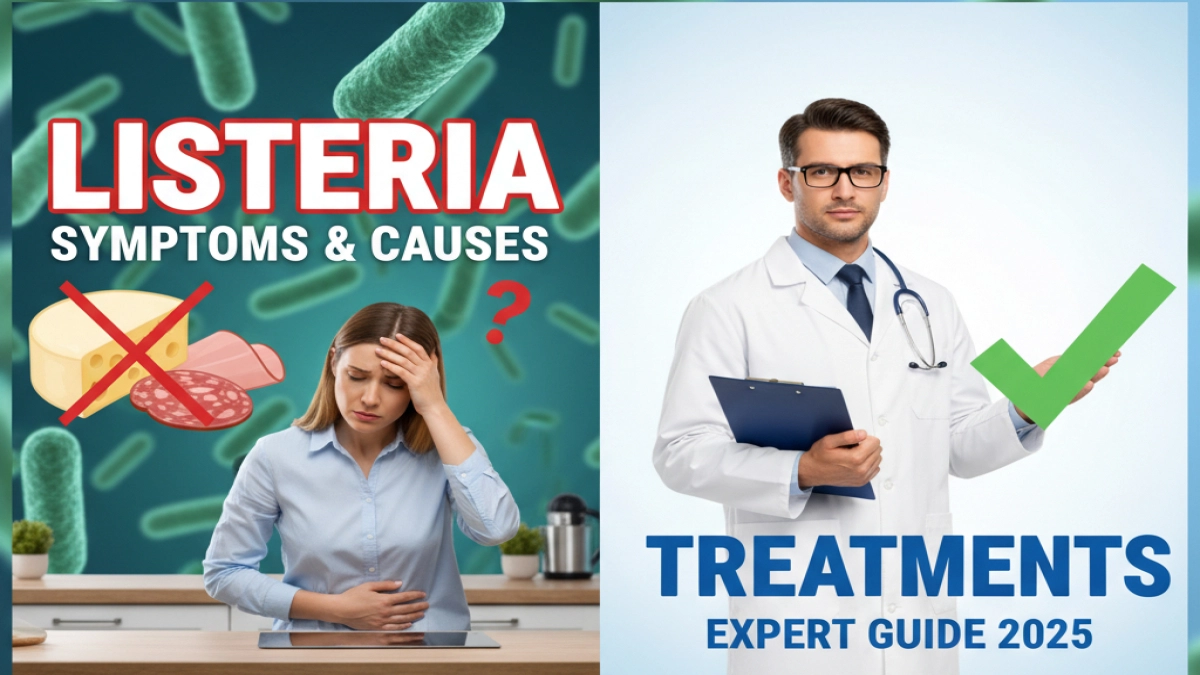Listeria monocytogenes, a stealthy bacterial pathogen, remains a significant public health concern worldwide. Despite advances in food safety and medical care, listeriosis—the infection caused by this bacterium—continues to challenge clinicians and consumers alike. This article delves deeply into the nuanced landscape of listeria symptoms, causes, and treatments, offering a richly detailed, expert-driven narrative designed to empower readers with actionable knowledge. By weaving together clinical insights, epidemiological data, and practical advice, this guide aims to be the definitive resource for anyone seeking to understand and combat listeria in 2025 and beyond.
Understanding Listeria: The Basics and Beyond
Listeria monocytogenes is a gram-positive, facultative intracellular bacterium that thrives in diverse environments, including soil, water, and decaying vegetation. Its ability to survive and multiply at refrigeration temperatures makes it uniquely dangerous in the context of food safety. Unlike many pathogens, listeria can grow in cold storage, which complicates prevention efforts.
Why Listeria Matters in 2025
Emerging trends in global food supply chains, climate change, and population demographics (notably aging populations and immunocompromised individuals) have heightened the relevance of listeria. The pathogen’s resilience and the severity of listeriosis—especially in vulnerable groups—underscore the need for updated, authoritative information.
Causes of Listeria Infection: Tracing the Source
Listeria infection primarily occurs through ingestion of contaminated food. The bacterium’s presence in ready-to-eat meats, unpasteurized dairy products, soft cheeses, and raw vegetables is well-documented. However, the complexity of modern food systems means contamination can occur at multiple points:
- Food Processing and Packaging: Cross-contamination in processing plants is a critical vector.
- Improper Food Storage: Since listeria grows at low temperatures, refrigeration alone is insufficient.
- Environmental Reservoirs: Soil and water contamination can affect crops and livestock.
Latent User Query: Can listeria be transmitted person-to-person?
While rare, vertical transmission from mother to fetus during pregnancy is a significant concern. Person-to-person transmission outside this context is extremely uncommon, highlighting the importance of foodborne pathways.
Recognizing Listeria Symptoms: A Spectrum of Clinical Presentations
Listeriosis manifests in a range of symptoms, often making diagnosis challenging. The incubation period varies from a few days to several weeks, complicating the link between exposure and illness.
Common Symptoms in Healthy Adults
- Mild flu-like symptoms: fever, muscle aches, fatigue
- Gastrointestinal distress: nausea, diarrhea
Severe Symptoms in High-Risk Groups
- Pregnant women: fever, chills, and notably, miscarriage or stillbirth
- Newborns: sepsis, respiratory distress, meningitis
- Elderly and immunocompromised: meningitis, encephalitis, septicemia
Subtle Signs Often Overlooked
- Headache and stiff neck
- Confusion or changes in alertness
- Loss of balance or convulsions
These symptoms necessitate prompt medical evaluation, especially in vulnerable populations.
Diagnosing Listeriosis: Challenges and Advances
Diagnosis hinges on isolating Listeria monocytogenes from sterile sites such as blood, cerebrospinal fluid, or placental tissue. However, the nonspecific nature of symptoms often delays suspicion.
Cutting-Edge Diagnostic Tools
- Polymerase Chain Reaction (PCR): Rapid detection with high sensitivity.
- Whole Genome Sequencing (WGS): Used in outbreak investigations to trace sources.
- Serological Tests: Emerging but not yet standard.
Section for augmentation: Incorporate proprietary clinical data or expert interviews on diagnostic turnaround times and accuracy improvements.
Treatment Strategies: From Antibiotics to Supportive Care
Listeriosis requires immediate and aggressive treatment, particularly in severe cases.
First-Line Antibiotics
- Ampicillin: The cornerstone of therapy, often combined with gentamicin for synergy.
- Alternatives: For penicillin-allergic patients, trimethoprim-sulfamethoxazole is used.
Supportive Care
- Hydration and electrolyte management
- Monitoring for neurological complications
- Intensive care for severe meningitis or septicemia
Emerging Therapies and Research
- Investigational use of bacteriophage therapy targeting Listeria
- Immunomodulatory treatments to enhance host defense
Section for augmentation: Expert commentary on antibiotic resistance trends and clinical trial data.
Prevention: The Best Defense Against Listeria
Preventing listeriosis hinges on food safety and public awareness.
Practical Tips for Consumers
- Avoid unpasteurized dairy and soft cheeses unless from trusted sources.
- Cook meats thoroughly and reheat leftovers until steaming hot.
- Wash raw vegetables meticulously.
- Observe expiration dates and proper refrigeration.
Industry and Regulatory Measures
- Enhanced surveillance and recall protocols
- Implementation of Hazard Analysis and Critical Control Points (HACCP)
- Public education campaigns tailored to at-risk groups
Addressing Latent Queries: What You Didn’t Know About Listeria
- Can pets carry listeria? Yes, animals can be asymptomatic carriers, posing indirect risks.
- Is listeria infection lifelong? No, with treatment, most recover fully, but neurological damage can be permanent in severe cases.
- How does listeria evade the immune system? It invades host cells and uses actin-based motility to spread intracellularly, avoiding immune detection.
Actionable Takeaways
- Recognize early symptoms and seek medical care promptly, especially if pregnant or immunocompromised.
- Practice rigorous food safety at home and advocate for transparency in food sourcing.
- Stay informed about outbreaks via public health channels.
- Support research and innovation in diagnostics and treatments by engaging with credible health organizations.
Conclusion: Navigating the Complex Terrain of Listeria in 2025
Listeria monocytogenes exemplifies the intricate interplay between microbiology, food safety, and clinical medicine. As we advance into 2025, the battle against listeriosis demands a multifaceted approach—one that combines cutting-edge science, vigilant public health measures, and informed individual action. This guide has sought to illuminate the path forward with clarity, depth, and practical wisdom, empowering readers to not only understand listeria symptoms, causes, and treatments but to actively participate in safeguarding their health and that of their communities.

